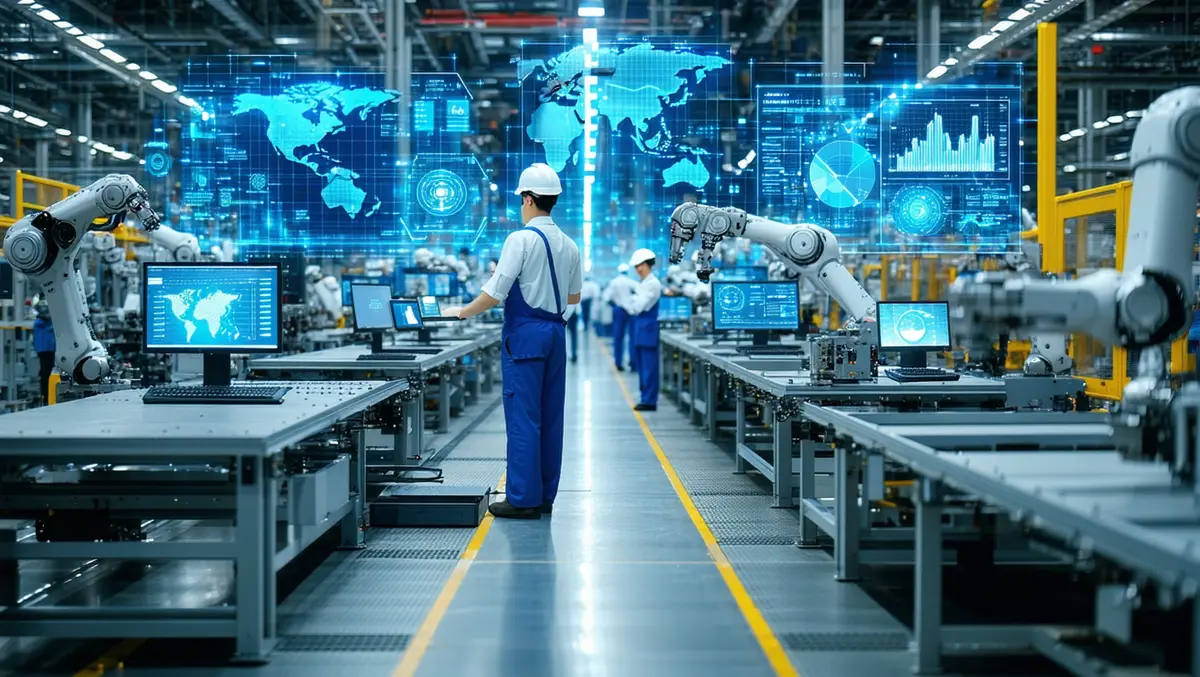
Revolutionising manufacturing: How data streaming drives decision making
Collaborative robots, AR protective goggles, AI-led quality inspection. Today's smart factories are a showroom for rapidly advancing technologies that feel straight out of a science fiction novel. As our manufacturing sector continues to evolve, these innovations are helping companies remain globally competitive while addressing local challenges. What was once steam-powered is now digitally driven – the efficiency, innovation and competitive advantage is resonating throughout Australia's manufacturing industry, as companies take on digital transformations.
In the era of the Fourth Industrial Revolution, or Industry 4.0, success in Australian manufacturing is undeniably digital – and more specifically, driven by real-time data streaming.
In fact, real-time data delivered via a data streaming platform is emerging as more than just an enabler for modern manufacturing businesses. Recent data streaming research demonstrates its compelling rewards, with 80% of IT leaders in manufacturing citing a 2-5 times ROI or greater from their investments in data streaming.
And with the promise of AI and machine learning set to further transform the industry, the value of real-time data streaming is only going to increase.
Driving data efficiencies with smart factories
Populated with an army of sensors and IoT devices, smart factories collect data on machine performance, environmental conditions, and production processes, enabling the real-time monitoring and optimisation of operations. Machine downtime is a relic of the old ways as predictive maintenance – continually improved through machine learning – identifies equipment failures before they happen.
In fact, IDC analysts predict that 60% of original equipment manufacturers will use AI and real-time asset data to service equipment pre-failure, avoiding 50% of unplanned downtime hours by 2026.
Similarly, while robots have long been employed as manufacturing tools to streamline production processes and take over mundane or dangerous tasks, current automation capabilities are taking data and learning with it. Now robots act as coworkers, educated via machine learning to be better collaborators by recognising and responding to a human colleague's gestures and voice commands.
Outside of the factory walls, data integration across the supply chain augments tracking, forecasting, and inventory management. Businesses now effectively have a crystal ball into market trends to be able to predict future demand and ensure their inventory will match it.
Real-time data also enables better communication and collaboration between the factory and external partners, as well as different internal departments – particularly where factories are very large. Shared, up-to-date information ensures that everyone is aligned and can act quickly and appropriately.
No matter where you sit in the complex web of manufacturing processes, real-time data streaming supports the kind of proactive and informed decisions that lead to measurable gains in efficiency, cost savings and overall performance.
From real-time data to smart decisions
Current trends see vast amounts of data from various sources – whether it's a sensor, a production log or customer feedback – being collected and analysed to generate insights that form the basis of key decisions being made somewhere along the supply chain.
The ramifications of unreliable, untrustworthy or insufficient data can compromise every aspect of the manufacturing process, from quality control to safety hazards to regulatory non-compliance. Manufacturers must be able to provide and correlate information at the right time in the proper context.
This is where a real-time data streaming platform proves a critical partner in action. Real-time data allows businesses to act on events as they happen with the most up-to-the-minute and credible information. By leveraging a data streaming platform, manufacturers can seamlessly integrate diverse data sources, creating a cohesive and agile ecosystem that responds dynamically to real-life conditions.
Research shows that 85% of IT leaders in Australia see data streaming platforms as one of the important enablers to 'joined-up visibility across the business'. One live example of the impact of the transformative combination of real-time data streaming in smart manufacturing is Confluent's work with BMW Group.
Inside BMW Group's state-of-the-art plants, data is collected from all the critical minutiae of manufacturing, including machine temperatures, machine performance, and location of parts on the assembly line. Data is also continuously produced and consumed by sales and the research and development operation.
BMW Group's Integration Platforms organisation wanted to make the abundance of real-time Internet of Things (IoT) data available to all teams to help drive innovation through use cases such as enabling operational applications that streamline factory production, and providing real-time data to the R&D team as they create and test new products.
Confluent is working with BMW Group to deliver a data streaming platform that enables teams to instantly access data in the analytics hub to find correlations, identify opportunities, and develop solutions that are relevant for their business department, for example, ordering parts, reviewing customer sales, or monitoring the R&D process.
With more and more machines, robots, and assembly lines pushing out more and more data, having a data processing platform that can swiftly distribute well-processed data to any internal consumer enables BMW Group to grow its IoT use cases, as well as after-sales, marketing, and customer engagement.
The future of data streaming in manufacturing
As AI and ML industry applications continue to develop in Australia's manufacturing sector, the true potential of real-time data is beginning to unfold. Organisations are already leveraging data streaming to gain a competitive edge, setting new milestones for efficiency and innovation.
But what will the next phase of this transformation bring? Manufacturers will increasingly explore new ways to connect data streaming with the decision making processes at every level of their business. For now, it seems the union of data and manufacturing is only just the beginning, with no end in sight.

